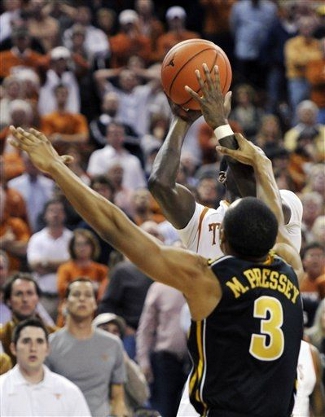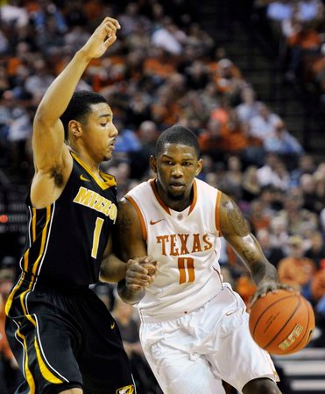#4/4 Missouri Tigers 67, Texas Longhorns 66
If the sport were horseshoes or hand grenades, these Texas Longhorns would be All-Stars. Instead, Texas fans were treated to another verse of the same old song, as their team made another furious late-game comeback, only to come up short in a 67-66 loss.
Down 10 with just less than four minutes left, the Longhorns quickly erased the deficit, taking the lead on a leaner by J’Covan Brown with 56 seconds to go. Missouri’s Michael Dixon responded on the other end, tossing in a layup with 31 seconds left to put the Tigers back on top.

Myck Kabongo’s final shot couldn’t find the mark
(Photo credit: Michael Thomas/Associated Press) 
Julien Lewis attacked the rim for Texas
(Photo credit: Michael Thomas/Associated Press) 
Clint Chapman and the Horns need a quick turnaround
(Photo credit: Michael Thomas/Associated Press) |


